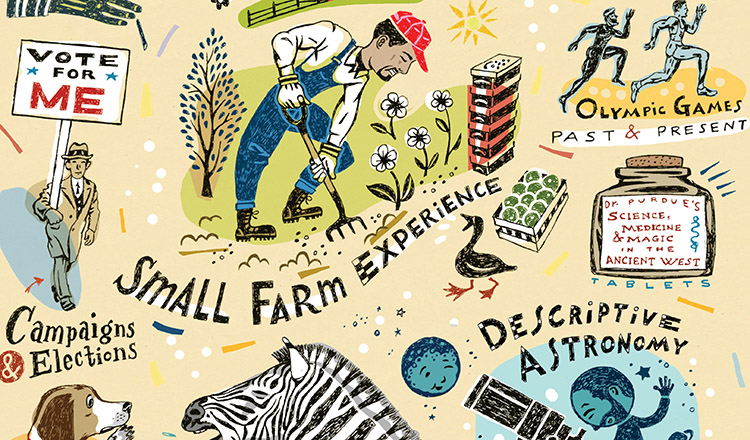We profiled 14 amazing courses that’ll make you wish you were a student again. Best of all? You can experience them without a single test, paper, or problem set.
Every year, Purdue offers thousands of courses that are designed to build students’ skills and hone their critical thinking abilities. But there are also many courses that seem designed to draw a crowd because of the uniquely fascinating view of the world that they offer.
And these are some of the courses we wanted to share with you. Though we couldn’t possibly highlight all of the terrific classes available to students, we scoured Purdue’s course catalog for some of the best.
We found more than a dozen classes in a wide variety of disciplines that cover everything from time-tested wisdom to practical life skills to up-to-the-minute news analysis. We think you’ll see at least a few in the pages that follow that will make you wish you had just one more semester in the classroom.
Red, White, and Blue
Contemporary Issues in American Studies
Taught by Rayvon Fouché, American studies

When people around the world use the term “America,” they’re typically referring to the United States, even though this nation certainly isn’t the only American one. The word also brings to mind a long list of issues — from gun violence to race relations — that, from a global perspective, define current American culture.
In Rayvon Fouché’s graduate-level course, students grapple with the idea of America as perceived globally. They explore, through today’s hottest topics, what it means to be American.
Class discussions range from the 2016 presidential election to the safety of hoverboards to the issue of trafficking human beings across the border between Mexico and the United States. No topic is off-limits, Fouché says. “I want them to think broadly about the ways in which interdisciplinary and global perspectives about American culture can be relevant to their research,” she says.
It turns out that one of the best ways to understand ourselves is by examining the ways that others see us. “I’m trying to get them to develop their ideas and beliefs about American society,” Fouché says. By the end of the course, students have a deeper appreciation for the country’s role in a global society.
Woke Up Like This
American Beauty
Taught by Sharra Vostral, history
Many women get praised for their natural beauty, but if there’s one thing Sharra Vostral would like her students to know, it’s that effortless beauty is typically anything but.
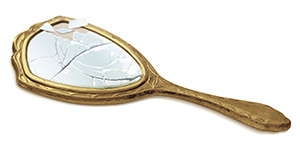
Take, for instance, our hair. Our bodies are covered with it, and many women spend hours each week shaving and plucking it, straightening it or curling it, conditioning it and coloring it. (Men, too, have their hair rituals, though they tend to be of a different order than women’s.)
Then, of course, there are the countless ways women try to modify their shapes through Wonderbras, spandex, and more permanent measures. “There are so many technologies that people use to modify their bodies, from plastic surgery to [the eyelash-lengthening drug] Latisse,” says Vostral.
The course examines everything from exercise to aging to celebrated body shapes of the day. (Woe to the woman born with a Kardashian shape in an age of Twiggy, or vice versa.)
Ultimately, Vostral believes it’s fine to decide to pursue (or not pursue) beauty at any level, but she also argues that having a deeper understanding of how culture shapes our ideas about appearance makes a difference. “We can’t escape from the billboards and the magazines and the body types,” she says. “But knowing that there are cultural assumptions [that underpin our perceptions of beauty] can be useful in accepting others and ourselves.”
Time to Smell the Flowers
Flower Arrangement and Indoor Plant Management
Taught by Mary Lou Hayden, horticulture
Each spring and fall, dozens of dorm rooms are brightened with gorgeous floral displays carefully arranged by students in Mary Lou Hayden’s course. The flowers look pretty — and they also probably live longer than the bouquet currently wilting on your kitchen counter. That’s because the students who bring their creations home have also learned to properly care for the flowers and greenery. “Flower arrangement and care is a lifelong useful skill, whether or not you work in a flower shop,” Hayden says.
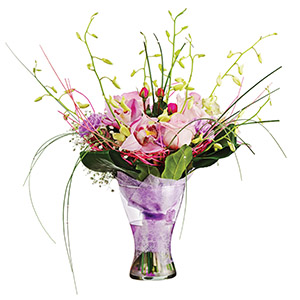
Hayden’s students practice their composition skills with flowers Hayden buys from a local wholesaler. Hayden emphasizes the principles of basic floral design, such as balance and proportion, but also encourages the occasional rule-breaking to add unexpected touches to an arrangement.
The course is about more than playing with stems and petals; students also learn what certain flowers mean, which can differ by culture and occasion. “We associate white flowers with purity, but in some cultures they represent death,” Hayden says. The course also covers the identification and care of houseplants as well as the science involved in growing them, such as the chemistry of plant foods and fertilizers.
For those of us just hoping to keep an anniversary bouquet looking fresh, Hayden passes along two tips. Add a good floral preservative to the water for added longevity, and always cut flowers at an angle with a good clean strike. Such a cut allows the veins in the plant, called xylem cells, to stay open and continue to absorb water.
What Did They Say?
Animal Communication
Taught by Jeff Lucas, biology
Woodpeckers use their powerful beaks to build nesting sites in trees and search for food, but when you hear that distinctive drumming sound, think Don Juan, not dinner, says Jeff Lucas. “When male woodpeckers drum on hollow trees, they’re sending a signal about their potential as mates,” he explains. “A female will listen to the purity, the frequency, and the loudness of the drumming to decide whether or not to mate with that male.”

Animal language may not be as sophisticated as Shakespeare, but it is intricate and interesting in ways we’re just beginning to understand, says Lucas. From the electrical pulses that electric fish use to communicate with one another to the calls of a frog in a chorus, animals have countless unique ways to share information about everything from nearby predators to the location of the next meal.
And what animals hear can change based on the season. In frogs, birds, and mammals, for example, as a female’s estrogen (and fertility) levels rise, so does her sophistication at picking out the nuances of a male’s communication methods. “When the estrogen levels are high, females detect really fine-scale information from a potential mate,” Lucas says.
While the class is designed to examine just about every animal but humans, Lucas acknowledges that much of what scientists have learned in the field may apply to us, too. “Communication, like lots of things in biology, incorporates a huge variety of different approaches,” he says. “That’s useful to animals, and it’s useful to us, too.”
Star Struck
Descriptive Astronomy: Stars and Galaxies
Taught by Rafael Lang, physics and astronomy
Those coin donation funnels — the mesmerizing ones that slowly swirl a penny around in circles as it’s pulled to the bottom — are more than just a persuasive tool to part you from your spare change. They also elegantly illustrate Kepler’s laws of planetary motion.

A group of students in Rafael Lang’s course recently made that discovery when they went in search of a response to Lang’s free-form “do-something-cool” astronomy assignment. “[Their findings] blew me away,” Lang says. “We can see planetary orbits at work at the Tippecanoe Mall.”
The do-something-cool project is just one way Lang engages his students’ curiosity about the universe as they explore such topics as stellar birth and death in supernovas, black holes, and dark matter. Hands-on class experiments include building a scale-model solar eclipse and cooking a comet out of dry ice, water, iron, ammonia, carbon powder, and liquid nitrogen.
Of course, they also observe the night sky. To make sense of the cosmos, Lang and the students head to the darkest spot they can find — like an Indiana cornfield or a local elementary school — with a Purdue-owned telescope.
Even though the universe can make us feel tiny, Lang says astronomy is a particularly accessible science. ““I hope this course removes the fear some students have of science,” he says.
What ‘PacMan’ Can Teach Us
Writing for Games
Taught by Samantha Blackmon, English
From simple board games like Candy Land and Life to complicated video games like Halo and Minecraft, games help us create and experience stories like no other media. “Games are immersive, interactive experiences,” says Samantha Blackmon. “When people think about old-school games, there’s often a time when players make the wrong choice and ‘die.’ But in today’s games, there’s often not a ‘fail state.’ Players make a choice, and the rest of the narrative changes.”

The techniques of game storytelling are vast. Take the crime-fiction game Her Story, for example: the game interface itself is like a Windows 95 desktop, with file folders that players click on to watch videos and listen to people being questioned about missing persons. “Because it’s just like a computer desktop, it’s as though the game itself disappears,” explains Blackmon. Another game, Brothers: A Tale of Two Sons, makes players “feel” the death of a character through the clever use of controllers.
Through discussions and readings on game theory, students learn how such games tick — and then they work collaboratively to create their own.
Working in teams, they write scripts, develop storyboards, and create flowcharts that can be turned into a game. “When you’ve got a creative writer, a computer graphics student, and an education student, they’re all coming from different perspectives and have to learn what strengths and limitations the other [disciplines] bring,” Blackmon says. “Working collaboratively and being able to see things from others’ perspective is essential.”
Games Theory
Olympic Games: Ancient and Modern
Taught by Bill Harper, health and kinesiology
When Pierre de Coubertin launched the modern version of the Olympic Games in 1896, he probably didn’t imagine today’s multimillion-dollar corporate sponsorships, the drug- and technology-fueled races to enhance athletic performance, or, for that matter, any female competitors at all.
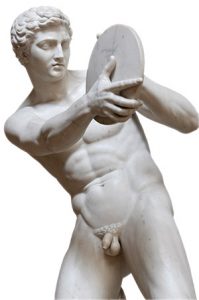
But what he did imagine was something even larger than the Games, called the Olympic Movement. “The Movement is a bigger idea about the power of sports to inspire a better, more peaceful world,” says Bill Harper.
Harper’s course tracks the Olympic Games from their origins in ancient Greece to their sputtering relaunch in the late 19th century, their rocky wartime years, and their current incarnation as political and business powerhouse.
The class doesn’t shy away from controversies that have tainted the games: Hitler famously used the Berlin Games to showcase his belief system, and Coubertin actively resisted allowing women to compete in the Games. But over time, Harper says, the Olympics often gets it right. Jesse Owens is often credited for singlehandedly crushing the myth of Aryan supremacy with his four gold medals at the Berlin Games, and by 2012, female competitors outnumbered male competitors overall.
Harper hopes his students begin to understand why the Olympics have thrived over time. “In spite of two world wars and so many other international brouhahas, the Games continue,” he says. “It’s the largest international effort that has peace and justice kiss. That’s an incredible statement.”
A Growth Industry
Small Farm Experience
Taught by Steve Hallett, horticulture and landscape architecture
When the Purdue Student Farm was established in 2011, one of the very first things it needed was a farm crew. At about the same time, the university created a new degree program of sustainable food and farming systems. Starting a course that gave students hands-on experience — and adding in a few summer internships — turned out to be the perfect way to get the farm up and running.

Students in Steve Hallett’s course, which is offered in both the spring and fall, work on everything that happens during a seasonal cycle of a small farm that produces vegetables and cut flowers. That includes planning for and selecting crops, greenhouse seeding and bed preparation, planting, analyzing, and treating for diseases and pests, irrigating, weeding, harvesting, and sales.
“We stop often to talk about what we’re doing, but it’s really an opportunity for students to do the work of farming,” explains Hallett. Farmers are jacks-of-all-trades, he says, so the course taps into several different disciplines, such as entomology, plant pathology, soil science, and economics. The student farm functions like an ag college, he says, training students for careers as agronomists, entomologists, and horticulturists. The course also adds in the knowledge students need to start and run their own sustainable small farm, should they choose to do so.
Because the Purdue Student Farm is a working enterprise and produces food to sell at local farmers’ markets and restaurants and through farm shares, students don’t just learn on a handful of demonstration plots, but take on all of the challenges—both good and bad—associated with farming. “The farm is a living laboratory where students can see the consequences of their decisions from year to year,” Hallett says. “It doesn’t get more realistic than that.”
The Monsters We Make
Introduction to 3D Animation
Taught by Ray Hassan, computer graphics technology
From Pixar movies to eye-popping architectural renderings to the latest in medical imaging technologies, 3D animation has probably already made your life a little bit richer. And in his course, Ray Hassan teaches his students to start creating some of these close-to-magical experiences.
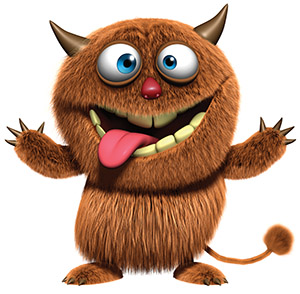
Hassan — who admits he’s partial to the movie monster side of the field — teaches his students to build 3D objects, add virtual skin and bones, and make their imaginary creatures move in a believable way. “In the end, they’ll create a little movie clip or a series of models that could be put in a video game,” he explains.
Throughout the course, Hassan also highlights the tiny details of 3D-animated films that showcase true mastery on the part of creators.
For example, the way that light bounces off surfaces is difficult to capture accurately; done right, however, it can infuse a scene with a powerful sense of reality. When Mike Wazowski, a character in Monsters University, walks through campus as sunlight filters through the trees, the effect is viewbook-perfect. “That scene is far more than just a single computer calculation. The light is exaggerated and embellished,” says Hassan. “But the way that it was done gives you an intense sense of being back on campus and getting ready to start a new semester.”
In the end, Hassan wants students to gain more than a deep appreciation for animated box-office smashes. “I want them to come away with one more tool to be creative,” he says.
A Matter of Life and Death
Mortuary Practices Across Cultures
Taught by Michele Buzon, anthropology
Our culture has long had an unbalanced relationship with death. We love the zombies and vampires that fill our television screens, but when it comes to the deaths of people we love, we lean toward speaking in hushed tones and letting others, such as those in the mortuary sciences and medical professions, deal with the aftermath.
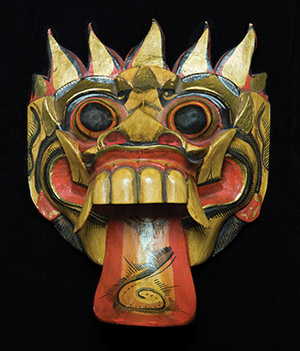
This hands-off approach isn’t the case in other cultures, many of which tend to their dead personally. By comparing and contrasting American mortuary practices — what happens to the body after death, how and where it’s buried, and what items accompany it — with those of other cultures, students see how death rituals reveal societal values, religious beliefs, and other cultural standards.
As part of the course, students complete several thought-provoking assignments, including mummifying a dead chicken according to ancient Egyptian practice, writing their own death plan, and visiting a funeral home to learn about embalming and cremation.
“I want them to think about what [mortuary practices] can tell us about a particular culture or society,” Michele Buzon says. “What is the meaning behind death rituals, whether they’re elaborate or simple? Why did people choose to bury their dead in such a way? Answering these questions can be eye-opening.”
Beyond the Horse Race
Campaigns and Elections
Taught by Josh Scacco, communication
As the countdown to November 8 begins, politicians at every level will be using all of their resources to persuade you to choose them when you’re in the voting booth this year.

But if the only thing you know about politics is what you see in media stories or the relentless stream of radio and television attack ads, you’re missing out, says Josh Scacco. “Those things are really just the tip of the iceberg,” he says.
In the course, students study topics including political fundraising and interest groups, how our families and geography influence our political identification, and how political parties actually work.
For instance, says Scacco, if you’ve ever wondered why the Republican presidential candidates have been facing off so often in prime time, while Democratic candidates have had their debates buried on Saturday evenings, don’t blame the candidates or the networks. “These rules are set by political party committees, and they’re choosing those schedules because they want to create advantages for their candidates,” explains Scacco. What those advantages are aren’t always made explicit, but students unpack potential reasons in class.
Scacco hopes students come away with a deeper understanding of the way that the mechanics of American elections shape the world we live in. “I want them to see how elections inform democracy, and how they contribute to both the promise and pitfalls of democratic governance,” he says.
Would You Like Wine with That?
Wine Appreciation
Taught by Christian Butzke, food science
How often have you stood before the vast array of wines at the liquor store, overwhelmed by the choices? Most likely, you choose the bottle with an appealing label or an affordable price point. That process is common — but perplexing, says Christian Butzke, a wine scientist and former commercial winemaker. “Imagine if you bought shoes in a box based only on an attractive label that’s not even a photograph of the shoes. That’s ridiculous! But that’s what we expect people to do with wine,” he says.
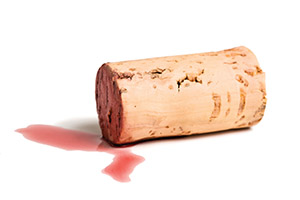
Students learn how wine is made — from sparkling to dessert wines, from whites to reds, and everything in between — and how its production and consumption differs across time and cultures.
The class touches on microbiology, engineering, politics, history, climate change, and chemistry, all while taking students on a virtual tour of the world of wine. Class sessions include wine tastings paired with information about wine etiquette and responsible consumption.
Butzke encourages students to travel to the states and countries that produce the wines that are sampled in class. “Wine can be an entrée to adventure and can foster curiosity about other cultures and ideas,” Butzke says.
You Pay for What You Get
Introduction to Personal Finance
Taught by Michael Roe, consumer science
When students arrive at Purdue, money can seem easy — sometimes too easy — to come by: student loan checks arrive regularly, and credit card offers are typically plentiful. Yet if students aren’t prudent about managing this new influx of cash and credit, they can find themselves in a deep financial hole.

Michael Roe is laser-focused on giving students the tools they need to make smart financial decisions. For example, he says, students may not initially see anything worrisome about racking up thousands of dollars in debt on a credit card, since low monthly payments can make the debt seem painless. “The problem,” says Roe, “is that the interest rate on a credit card can be as high as 21 percent.” In other words, those monthly payments will add up — quickly — to far more than any of the initial charges.
Students also talk about the power of contributing to retirement accounts as early as possible, a topic that their parents may not have had to worry about when they started working. “Years ago, companies had pension plans, and a person would work for 40 years and get a pension for the rest of his or her life,” Roe says. “That’s just not the case now.”
Roe wants his students to have the skills they need to take personal responsibility for their finances, so they can make decisions that benefit them for the rest of their lives. “These days, people just don’t have the option not to pay attention to their money,” he says.
Get Well Soon
Science, Medicine, and Magic in the Ancient West
Taught by K. Dickson, classics
Suffering from the flu? Yes, it’s a drag, but be glad you live in the 21st century. A few thousand years ago, nobody understood that microscopic viruses were the culprits — oftentimes, your very soul was at stake. “Traditionally, disease was associated with demonic possession, divine punishment, or some vaguely conceived notion of physical or moral pollution,” explains K. Dickson.

Those ideas began to change in the fifth century BCE, when argumentative Athenians encouraged vigorous debates that started shifting consensus about the cause of illness to the more scientific approaches we have today.
In the course, Dickson and his students examine the ways that religion, astrology, magic, and medicine overlapped in the ancient West, and how they began to separate and change over time.
While we might scoff at some of the more outrageous ancient ideas about the way our bodies work, we may not be as evolved as we think, says Dickson. “In the ancient world, if a man sneezes, he’s got a cold, but if a woman sneezes, there’s something wrong with her uterus,” he says. “That seems strange, but the idea of female physiology dominated by reproductive and sexual issues infuses modern Western science all the way up through Freud, and it still lurks in the background. You can see how these ideas were constructed and developed over time.”

